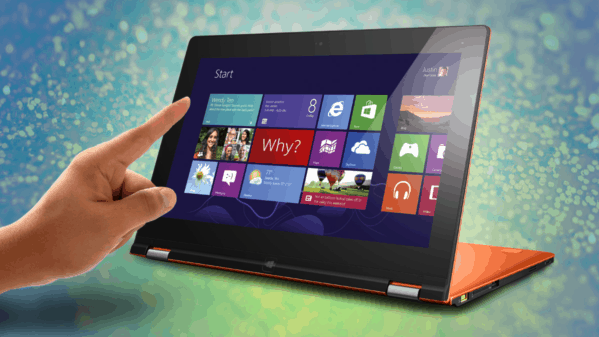When you use a smartphone all day long, it's easy to think that every screen in your life should respond to touch. Touch screens are necessary on handsets, tablets and 2-in-1 hybrids that transform from notebooks to tablets. However, no matter how badly vendors want to sell you one, a traditional laptop with a touch screen is a terrible idea and a bad buy. Here are five reasons you should just say "no" to touch-enabled notebooks.
Usually More Expensive
While some laptops are available only with a touch screen, others offer touch as a pricey option when you configure your system. For example, for a typical mid-range laptop around $1000, a touch-screen option usually adds an extra $200 or more. But even if the touch version isn't any more expensive, or if you find a notebook that's only available with touch, you should avoid it.
Worse Battery Life
Regardless of whether you use it, the touch digitizer is on all the time and thus sucks up significantly more power, resulting in a laptop lasting from 15 to 25% on the same battery charge! Unfortunately, you can't do anything about this battery penalty after you've bought a touch-screen laptop. Even if you disable touch-screen, the digitizer continues to slurp power, even if it can't respond to your taps.
A Thicker, Heavier PC
If you choose a laptop with touch, prepare to literally carry the burden of your mistake with you wherever you go. Glass that is used to cover the digitize, is usually heavy and can add anywhere from 100 to 200 grams to the laptop weight.
Like to Reach Across the Keyboard?
When you touch a tablet or smartphone, you usually bring it closer to your face. However, with a clamshell laptop, you have to reach across the keyboard, which is awkward at best and injurious at worst. If you are reading this on a laptop - just try it for yourself! Extend your arm and try to do some hand gestures as if you are using the touch screen. How long can you last before feeling tired?
Sturdiness and stability suffers
If you're buying a traditional laptop that does not transform into a tablet, you're probably doing it because you want the good productivity experience that comes from having a sturdy hinge and a fully functional keyboard. So why reach your hands off of the home row or the touchpad and jab at the screen? A powerful touchpad actually has more helpful gestures than a touch screen, offering helpful movements such as three-finger swipe, two finger rotation and more. Navigating Windows 10's desktop with a touchpad is just as easy and rewarding as with a touch screen.
Poorer Viewing Angles
If you want your laptop to double as a mirror, get one with a touch screen. Most touch screens are made from glossy material, which limits viewing angles and shows reflections. Just imagine trying to give a presentation or watch a movie with two people gathered around your notebook. You can see the images just fine because you're looking at the display head-on, but your friends, who are 45 degrees or more off-centre, see washed-out pictures covered by their own faces.
More expensive repairs
If you break a regular laptop screen, it's usually not so expensive to replace. The parts are usually interchangeable, and as long as the size and resolution matches, any screen from other brands will work. Thus, screens are relatively cheap to make and most computer repair places will have them in stock. Not so much with laptop screens! If you happen to break one, the whole screen assembly usually needs a replacement, which prolongs the repair time and increases the costs.
Bottom Line
With a touch screen on a clamshell-only laptop, you pay more to get less — less battery life, less portability and less usability. Unfortunately, PC manufacturers keep making touch-screen laptops because they think piling on this extra but useless feature will help them sell units. Maybe, in the future, the difference in battery life, weight, and parts availability between touch and non-touch screens will be so small that no one will notice. However, today, there's still a huge difference.







